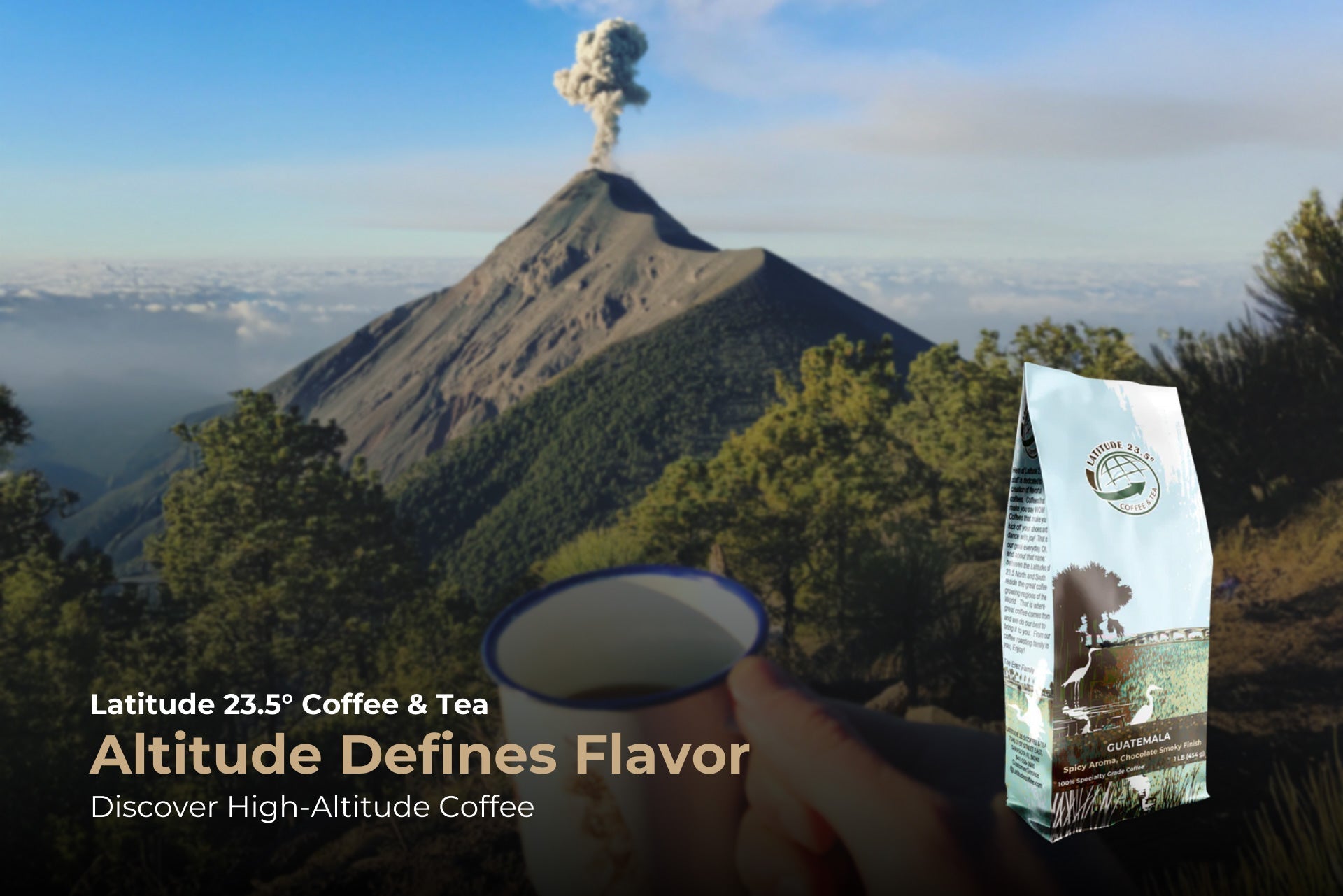Latitude

When it comes to coffee, altitude plays a significant role in shaping the flavor, acidity, and body of your cup. High-altitude coffee farms produce some of the world’s most sought-after beans, known for their complexity, bright acidity, and depth of flavor. But how exactly does altitude influence coffee quality?
At Latitude 23.5 Coffee & Tea, we source beans from some of the finest high-altitude farms, ensuring premium quality with every sip. In this guide, we’ll explore the science behind high-altitude coffee, why it matters, and what flavors you can expect from different elevations.
How Altitude Affects Coffee Growth & Flavor
Coffee plants thrive in tropical climates at elevations between 600 to 2,500 meters (2,000 to 8,200 feet). As elevation increases, temperatures drop, and coffee cherries develop more slowly, allowing for greater sugar concentration and more complex flavors.
Altitude & Flavor Profiles
| Altitude (meters above sea level) | Flavor Profile |
|---|---|
| 600-900m (Low Altitude) | Mild, nutty, chocolatey, lower acidity. |
| 900-1,200m (Mid Altitude) | Balanced, smooth, medium acidity, sweet caramel notes. |
| 1,200-1,800m (High Altitude) | Bright acidity, fruity, floral, complex flavors. |
| 1,800m+ (Extreme High Altitude) | Intense acidity, pronounced fruitiness, highly complex. |
Learn more about altitude and coffee quality.
Why High-Altitude Coffee is Superior
- Slower Bean Maturation = More Flavor: Cooler temperatures slow coffee cherry growth, leading to denser beans with concentrated sugars, enhancing sweetness and complexity.
- Higher Acidity = Brighter, More Vibrant Tasting Notes: High-altitude beans often exhibit citrus, berry, or floral notes that give coffee its crisp, bright taste.
- Greater Complexity & Aromatics: High-altitude coffee develops intricate layers of flavor, often with hints of jasmine, stone fruits, and honey.
Read about how altitude affects coffee acidity.
Latitude 23.5's High-Altitude Coffee Selections
At Latitude 23.5 Coffee & Tea, we proudly source high-altitude coffee from some of the world’s most renowned growing regions.
Shop our high-altitude coffee here.
How to Brew High-Altitude Coffee for Maximum Flavor
- Pour-Over (Best for Fruity, Bright Coffees): Enhances acidity and delicate floral notes.
- French Press (Best for Complex, Full-Bodied Coffees): Extracts rich flavors and heavier body.
- Espresso (Best for Bold, Intense Coffees): Concentrates the bean’s flavors into a smooth shot.
Discover the best brewing methods for different coffee profiles.
Why Choose High-Altitude Coffee from Latitude 23.5?
- ✔️ Farm-Direct Sourcing: We work closely with farmers to ensure ethical, sustainable, and high-quality beans.
- ✔️ Slow-Grown for Maximum Flavor: Our high-altitude coffee develops richer, more complex notes.
- ✔️ Hand-Roasted for Perfection: Small-batch roasting ensures that each bean’s unique characteristics are preserved.
Conclusion
High-altitude coffee isn’t just about where it’s grown—it’s about the flavor, acidity, and complexity that make every sip extraordinary. By understanding how altitude affects coffee, you can choose the best blends to match your taste preferences.
At Latitude 23.5 Coffee & Tea, we bring you some of the finest high-altitude coffees, sourced from the best coffee-growing regions in the world. Ready to taste the difference? Explore our collection today. ☕✨
Related articles
From Farm to Cup: How Ethical Sourcing Shapes Every Roast
Discover how Latitude 23.5° Coffee & Tea sources coffee directly from farms across Latin America, Africa, and Asia
☕ The Secret to a Perfect Morning Brew: Grind Size, Method & Freshness Explained
Discover expert tips from Latitude 23.5° Coffee & Tea for brewing café-quality coffee at home.



